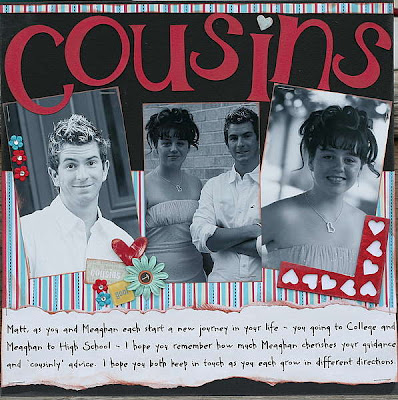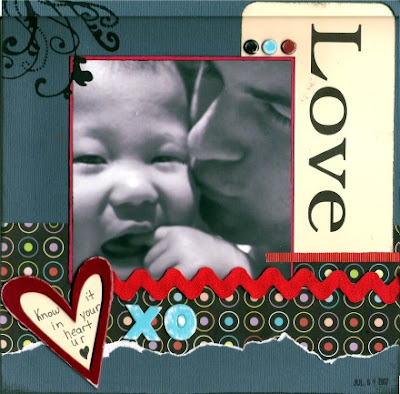Templates, formally known as stencils, are a fun and easy way to embellish your layouts or cards. There are many templates designed just for scrappers. Some of the more popular styles are journaling and doodling templates, but there are many ways to incorporate different template styles into your scrapping and card making.
Templates lend themselves to a variety of mediums such as ink, paint, markers, chalk and pens. Paint, opaque pens and sometimes chalk work best on dark papers. Use your scraps to determine which medium will give you the look you’re after.
You may want to use repositionable tape to keep the template in place while you’re working. I’ve found that this technique is especially helpful when working with paints, chalks and large templates.
Journaling/Doodling Templates
These templates usually have very narrow or small openings. One of my favorite methods for working with these templates is rubbing an inkpad across the template. It gives a nice soft, clean look. A pen or marker can be used for a sharper finish. Pencils can be used if you just want guide lines for journaling. Be sure to use pencils lightly as erasing can fade your papers.

This swirl was done by rubbing an ink pad across the template.
Paints and Templates
The key to working with paints is to keep your brush fairly dry. If you have too much paint on your brush it will leak under the edges of the template. Foam or stiff stenciling brushes work best. Dip the tip of the brush in paint then blot it until it’s fairly dry. Apply the paint with an up and down motion as opposed to a brush stroke.
Chalks and Templates
Chalks give a soft, pretty look. They are easy to blend, even within the boundaries of a template. Another advantage to chalks is they erase easily so if you don’t like the effect you’ve achieved, you can start over.

Same Template-different mediums
More Ideas
Use a pen, marker or pencil with your template, then cover your tracings with glitter glue.
Use embossing ink pads with doodling templates, then emboss.
Use the template as a guide for placing bling, brads or other embellishments.
Get those templates out and start playing!

 And if tags are too big, you can always use small rubons or transparencies from Hambly or the little post-it notes from Heidi Swapp.
And if tags are too big, you can always use small rubons or transparencies from Hambly or the little post-it notes from Heidi Swapp.

































